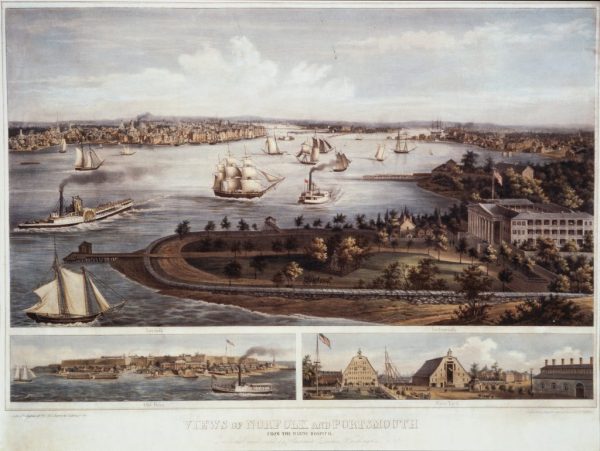
The steamer Ben Franklin pulled into the Norfolk-Portsmouth harbor on 7 June 1855 on her way to New York from the Virgin Islands, where yellow fever was prevalent. After efforts to quarantine infected crew members failed, cases of the fever appeared along the waterfront in both cities, then quickly spread inland.
By August, businesses had closed, church services were suspended, and thousands of residents had fled in a general panic as deaths occurred at the rate of more than 80 per day. Coffins were stacked in the cemeteries with no one to dig the graves, and many victims were buried in mass graves as coffins became scarce.
Of those who remained, there would be nearly 3,000 deaths in Norfolk and Portsmouth. The sound of the hearse could be heard rattling through the empty streets night and day. Aid came from around the country in the form of financial and material donations; and doctors, nurses and other volunteers who traveled to the area to help, many succumbing themselves.
A Howard Association was formed in Norfolk to set up a temporary hospital, collect money for relief, and establish the Howard Asylum for the scores of children who were orphaned. The fever abated after two hard frosts in October, but Norfolk’s cemeteries still bear silent witness to the Summer of the Pestilence.
On November 9, 2016, NSCC held a ceremony at Elmwood Cemetery to memorialize the victims of the 1855 Yellow Fever Epidemic.
Additional Sources
For detailed information on the history of the Yellow Fever Epidemic, visit this link.

